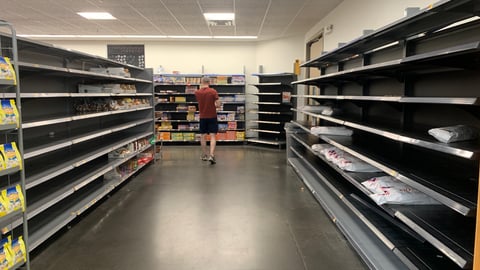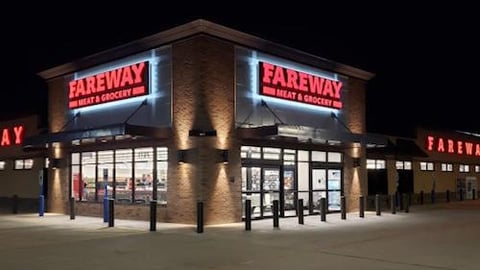Category Management in 2021: An Action Plan Retailers Can Execute Now
The world of category management was rocked this year with COVID-19. Grocery retailers and brands had to learn in real-time which products and categories mattered most and quickly move their resources to respond to customers’ needs. P&G quickly cut out the most inefficient SKUs and brands in its categories, PepsiCo cut 20% of its products, and General Mills pared back nearly half of all its soups. As the pandemic ebbed and flowed, so did consumer behavior. By the fall, with a slower recovery than originally predicted playing out, value has become a more important driver of choice. Slightly more than 91% of consumers reported they were paying close attention to price, according to the fifth installment of the consumer pulse survey dunnhumby launched in March 2020. As we look to 2021, grocery retailers will need to raise the bar on their category management so they can outperform in the challenging months ahead.
Understand Merchandising Roles and Tactics
To build data-led, customer first, collaborative category management, the first step retailers need to take is to link corporate strategy to commercial strategy. This will ensure that a retailer’s limited resources are invested in the best way possible across the portfolio for customers, while delivering against corporate objectives. Retailers need to understand “which categories matter most to my customers?” and “which categories matter to my overall financial performance?” To link corporate strategy to commercial strategy, retailers need to examine 1) Customer First Category Roles, 2) Category lever DNA, 3) Assortment, and 4) Private Brands.
Each category plays a unique role in a retailer’s portfolio. In order to support your categories effectively, it’s important to understand the role of each category so you can invest accordingly. You do this by examining customers’ behavior (i.e., what and how they buy) and their attitudes. This helps determine which categories matter most to customers and influences their decision to shop a retailer. Equally important is what a category means for the retailers’ financial performance — that is, which categories make or break the P&L? When you consider these two dimensions simultaneously, you have a complete picture of the role each category plays in your portfolio, and you can plan your investment accordingly.
The same way that not all categories are created equal, not all categories can be activated using the same merchandising tactics. Retailers need to invest in merchandising tactics according to each categories’ unique merchandising DNA. The most important levers are Assortment Variety (how important product breadth is), Innovation (how important new products are for a category), Availability (level of importance of products being in stock per category), Promotions (each category will respond differently to promotions), and Private Brand (plays different roles for customers in different categories). We have found it very important to map each of these merchandising levers with Category Roles.
Assortment and Private Brand have become increasingly important during COVID-19. With the sudden rise of food at home, retailers and brands need to make sure they are covering the key customer needs states with the right Assortment. By utilizing customer data science, retailers can build the right Assortments by analyzing customer needs states, generating prescriptive assortment recommendations, defining core minimum “must stock” assortments, and tracking and diagnosing out of stocks.
The next step in building Customer First category management is to determine if your Private Brand is providing value for customers. To do this, retailers need to utilize customer data to 1) understand Private Brand importance, 2) compete with discounters, 3) showcase the Private Brand, 4) track evolving customer behavior, and 5) innovate where relevant.
Establish a Retailer-Supplier Collaboration Model
COVID-19 has illustrated that each phase of the crisis calls for different merchandising tactics, and this will also apply to the post-crisis phase. With supply chains back on track, retailers can prioritize new winners, cater to emerging needs, and expand assortment where important. To really put your customers first requires retailers and brands to build a Customer First collaboration model.
Sharing the retailers’ Customer First frameworks, roles, lever DNA and category objectives with brands enables them both to support a common category plan for the good of the category and customers. As a result, brands can be actively involved and focus their efforts on the right categories and levers in the planning and execution work that will take place.
Some examples of ways retailers and brands can collaborate include:
- Using a self-service customer insights platform to share customer data insights for a “single source of truth.”
- Building customer first assortments by optimizing assortment based on a solid. understanding of customer need states, substitutability and product performance.
- Optimizing the retailer’s promotion plan by working together with brands to invest in the right promotion strategies based on an understanding of customers’ responses to price changes and price perception.
- Tracking and identifying out-of-stocks, and identifying stores, distribution centers and DSD suppliers to focus on.
2020 has been a transformative year for the grocery industry. Online shopping hit its tipping point. Consumers’ consolidated their trips, tried new brands, categories, and stores and doubled down on value. And for many retailers and brands, they learned to adapt and be nimble with changing conditions and behavior. Now is the time for retailers and brands to work together to raise their game. By using your customer data you can raise the bar on your Category Management game even further so you can outperform in 2021.
Daryl Wehmeyer is Head of Category Management, North America for dunnhumby.







